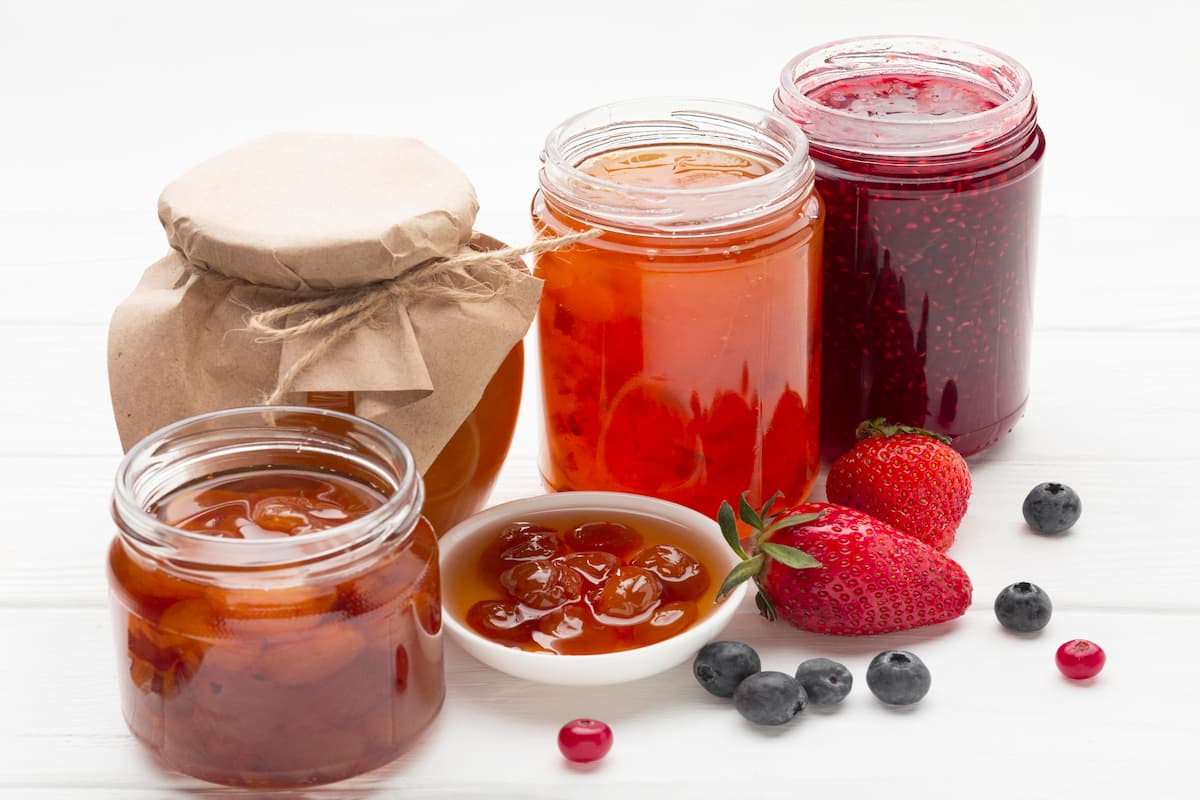When Was Fermentation Invented?
Fermentation, a natural process that transforms food and beverages with the help of microorganisms, has played a significant role in human history. From preserving food to enhancing flavors, it's been an essential part of our culinary journey. This blog aims to uncover the origins of fermentation and provide insight into when this fascinating practice was first invented.
The Earliest Records of Fermentation
Tracing the origins of fermentation takes us back to some of the earliest civilizations in human history. These ancient societies relied on fermentation for various purposes, including food preservation, enhancing flavors, and creating alcoholic beverages. In this section, we will delve into the fascinating world of early fermentation practices in Egypt, China, and the Roman Empire.
Ancient Civilizations and Their Use of Fermentation

The art of fermentation was practiced by numerous ancient cultures, but some of the most notable examples come from Egypt and China. Beer making in Egypt dates back to around 3000 BCE, when the process was used to produce a nourishing beverage from grains. Egyptian beer was an essential part of daily life, consumed by both the rich and the poor. Archaeological evidence, such as brewing equipment and beer residue, has been found in various locations throughout ancient Egypt, highlighting the importance of this fermented drink in their society.
Meanwhile, in ancient China, rice wine production was a vital aspect of their civilization. As far back as 7000 BCE, the Chinese were using fermentation to create alcoholic beverages from rice, millet, and other grains. This early form of rice wine, known as Jiu, played a significant role in Chinese culture, featuring in religious ceremonies, social gatherings, and even as medicine. The rich history and cultural significance of rice wine in China still resonate today, as it remains a popular beverage in modern times.
Fermentation in the Ancient World
Moving further into the ancient world, the Roman Empire also made extensive use of fermentation. One example is the production of garum, a fermented fish sauce that was highly prized for its unique flavor and versatility. Made from fish entrails, salt, and various herbs, garum was an essential ingredient in Roman cuisine and a valuable trade commodity. Its widespread use and popularity among the Romans demonstrate the importance of fermentation in their society.
Early evidence of fermented foods can also be found in various other cultures throughout history. From the traditional fermented dairy products of the Middle East to the pickled vegetables and soybean-based products of East Asia, fermentation has played a crucial role in the development of diverse food cultures. These early examples showcase the universal appeal of fermentation, paving the way for the innovative techniques and diverse range of fermented products we enjoy today.
How Fermentation Works
In order to understand when fermentation was invented, it's essential to grasp how this transformative process works. Fermentation involves the conversion of raw ingredients into more complex and flavorful products, thanks to the action of microorganisms. This section will explore the role of these microorganisms, provide examples of common fermented foods and beverages, and explain the science behind this remarkable process.
The Role of Microorganisms in the Fermentation Process
At the heart of the fermentation process are microorganisms such as bacteria, yeast, and mold. These tiny organisms consume sugars and other compounds in food, producing various byproducts including alcohol, acids, and gases. This metabolic activity results in the preservation, flavor enhancement, and nutritional improvement of the original ingredients. Different types of microorganisms are responsible for different types of fermentation, which is why there is such a diverse range of fermented products worldwide.
Examples of Common Fermented Foods and Beverages
Throughout history, people have enjoyed a wide variety of fermented foods and beverages. Some well-known examples include:
- Yogurt: Fermented milk product, made by introducing specific bacteria cultures
- Sauerkraut: Fermented cabbage, produced by lactic acid bacteria
- Kimchi: Korean fermented vegetable dish, made with cabbage and other ingredients
- Beer: Fermented barley malt beverage, produced by yeast
- Wine: Fermented grape juice, made by yeast converting sugars into alcohol
- Kombucha: Fermented tea, produced by a symbiotic culture of bacteria and yeast
Under the umbrella of these well-loved fermented foods, the topic of sauerkraut fermentation storage occupies a unique place in culinary practices. To maintain its distinctive tang and crunchy texture, proper storage techniques after fermentation are critical. It's recommended to keep the sauerkraut submerged in its brine within a cool, dark place, such as a refrigerator or cellar, to ensure it remains delicious and safe to consume over time.
These are just a few examples of the countless fermented foods and beverages enjoyed around the world, showcasing the versatility and creativity of this ancient process.
The Science Behind the Transformation of Raw Ingredients
The magic of fermentation lies in the metabolic activity of microorganisms. As they consume sugars and other compounds, they produce byproducts that alter the taste, texture, and nutritional content of the raw ingredients. Some examples of these transformations include:
- Alcohol production: Yeast metabolizes sugars, creating alcohol and carbon dioxide
- Lactic acid fermentation: Lactic acid bacteria convert sugars into lactic acid, which acts as a preservative and imparts a tangy flavor to products like yogurt and sauerkraut
- Acetic acid fermentation: Acetic acid bacteria oxidize alcohol into acetic acid, resulting in the characteristic tart flavor of vinegar and kombucha
Through these complex biochemical processes, microorganisms are able to transform raw ingredients into a vast array of fermented foods and beverages, each with its own unique taste and health benefits.
The Evolution of Fermentation Techniques

Throughout history, the process of fermentation has evolved and adapted to the needs of different societies. In this section, let's take a look at some of the key milestones in the development of fermentation techniques.
Spontaneous Fermentation and Back-Slopping
In the early days, fermentation often happened spontaneously, with microorganisms naturally present in the environment leading to the transformation of raw ingredients. As people began to understand the benefits of fermentation, they started using a technique called back-slopping, which involved reusing a portion of a previous fermented batch to kick-start the fermentation process in a new batch. This method helped to create a more consistent and controlled environment for fermentation to occur.
The Development of Starter Cultures
Over time, the practice of using starter cultures emerged. These cultures are made up of specific microorganisms that are known to produce desirable fermentation outcomes. By introducing these starter cultures to the raw ingredients, the fermentation process became more predictable and reliable. This innovation allowed for the production of a wider variety of fermented foods and beverages with distinct flavors and characteristics.
The Use of Multiple Strains and Adaptation for Co-Existence
As the understanding of microorganisms and their role in fermentation grew, it became clear that different strains of microorganisms could work together to produce unique fermentation outcomes. This led to the practice of using multiple strains in a single fermentation process, allowing for the creation of even more diverse and complex flavors. These strains were carefully selected and adapted to co-exist in a symbiotic relationship, enhancing the overall fermentation process.
Genetic Improvement of Starter Cultures and Modern Advancements
Today, the science of fermentation has advanced to the point where researchers can manipulate the genetic makeup of microorganisms to create new and improved starter cultures. This has opened up a whole new world of possibilities for the fermentation industry, with producers being able to create highly specialized and targeted fermentation outcomes. The use of modern technologies, such as CRISPR/Cas9, has enabled the development of customized strains that can optimize the fermentation process and produce specific desired results. In conclusion, the evolution of fermentation techniques has come a long way from its spontaneous beginnings to the highly specialized and controlled processes seen today. The advancements in our understanding of microorganisms and their role in fermentation have allowed for the creation of a vast array of fermented foods and beverages, which continue to play a significant role in our diets and lifestyles.
Fermentation in the Modern World
Fermentation continues to play a significant role in today's culinary landscape, with fermented foods and beverages enjoying immense popularity. Not only do these foods and drinks offer unique flavors and textures, but they also provide a range of health benefits. As a result, fermentation has become an essential technique in both professional and home kitchens.
The Popularity of Fermented Foods and Beverages Today
From kombucha and kimchi to sauerkraut and sourdough bread, fermented foods and beverages have become increasingly popular in recent years. People enjoy these products for their distinctive flavors and textures, as well as their potential health benefits. This growing interest in fermented foods has led to a resurgence of traditional fermentation techniques, as well as the development of new methods for creating innovative culinary creations.
Health Benefits of Fermented Foods
Fermented foods are not only tasty, but they also provide a variety of health benefits. They are rich in probiotics, which are beneficial bacteria that help maintain a healthy gut microbiome. A balanced gut microbiome is crucial for overall health, as it aids in digestion, supports the immune system, and even plays a role in mental well-being. Additionally, the fermentation process can increase the bioavailability of nutrients in foods, making them even more healthful.
Fermentation as a Means of Preserving and Enhancing Flavors
One of the primary reasons fermentation has been used throughout history is its ability to preserve foods. By converting sugars into acids, alcohols, or gases, fermentation inhibits the growth of harmful bacteria, allowing foods to be stored for extended periods. Furthermore, the fermentation process can enhance the flavors of foods, creating complex and unique taste profiles that cannot be achieved through other methods of cooking or preservation.
The Role of Fermentation in Professional and Home Kitchens
Fermentation is not only limited to industrial food production; it also plays a vital role in both professional and home kitchens. Chefs and home cooks alike use fermentation techniques to create an array of delicious and healthful dishes. From pickling vegetables to culturing yogurt and cheese, the art of fermentation is an essential skill for anyone looking to expand their culinary repertoire.
Fermenting at Home: BurpLids® Products
For those interested in fermenting at home, BurpLids® offers a range of fermentation kits and accessories to make the process simpler and more enjoyable. These products are designed to cater to the needs of both beginners and experienced fermenters, providing all the necessary tools for successful fermentation.
By using BurpLids® products, home fermenters can reap numerous benefits. The kits and accessories enhance the overall fermentation experience by ensuring a consistent and controlled environment. This promotes the growth of beneficial microorganisms while preventing the development of harmful ones, resulting in healthier and tastier fermented foods.
BurpLids® products not only make the fermentation process easier but also more successful. The user-friendly design of the kits and accessories allows for proper gas exchange, maintaining an optimal environment for fermentation to take place. Additionally, the products are made from high-quality materials, ensuring durability and long-lasting performance.
In conclusion, BurpLids® products offer an excellent solution for those looking to explore the world of home fermentation. With a range of kits and accessories to choose from, there's something for everyone, regardless of their experience level. So why not take the plunge and start fermenting at home with BurpLids®? To learn more about their products and to stay updated on the latest news and tips, make sure to visit our website and follow us on Instagram , Facebook , and YouTube .
Fermentation: Timeless Flavors
Fermentation has played a crucial role throughout history, from ancient civilizations to modern food and beverage production. With its enduring importance, it's no surprise that fermentation continues to be a popular practice today. Embracing the art of fermentation at home can lead to delicious and nutritious results, and BurpLids® products are designed to make the process even easier and more successful. So why not dive into the world of fermentation and experiment with new flavors? Explore the BurpLids® catalog to find the perfect tools and accessories for your home fermentation journey!
Craft Your Health, Cultivate Your Life,
Dawn
 Plastic BurpLids® Curing Kit
Plastic BurpLids® Curing Kit
 BurpLids® 12 Pack Curing Kit
BurpLids® 12 Pack Curing Kit
 BurpLids® 14 Pack Curing Kit
BurpLids® 14 Pack Curing Kit
 BurpLids® Pack Of 4 Fermentation Kit
BurpLids® Pack Of 4 Fermentation Kit





